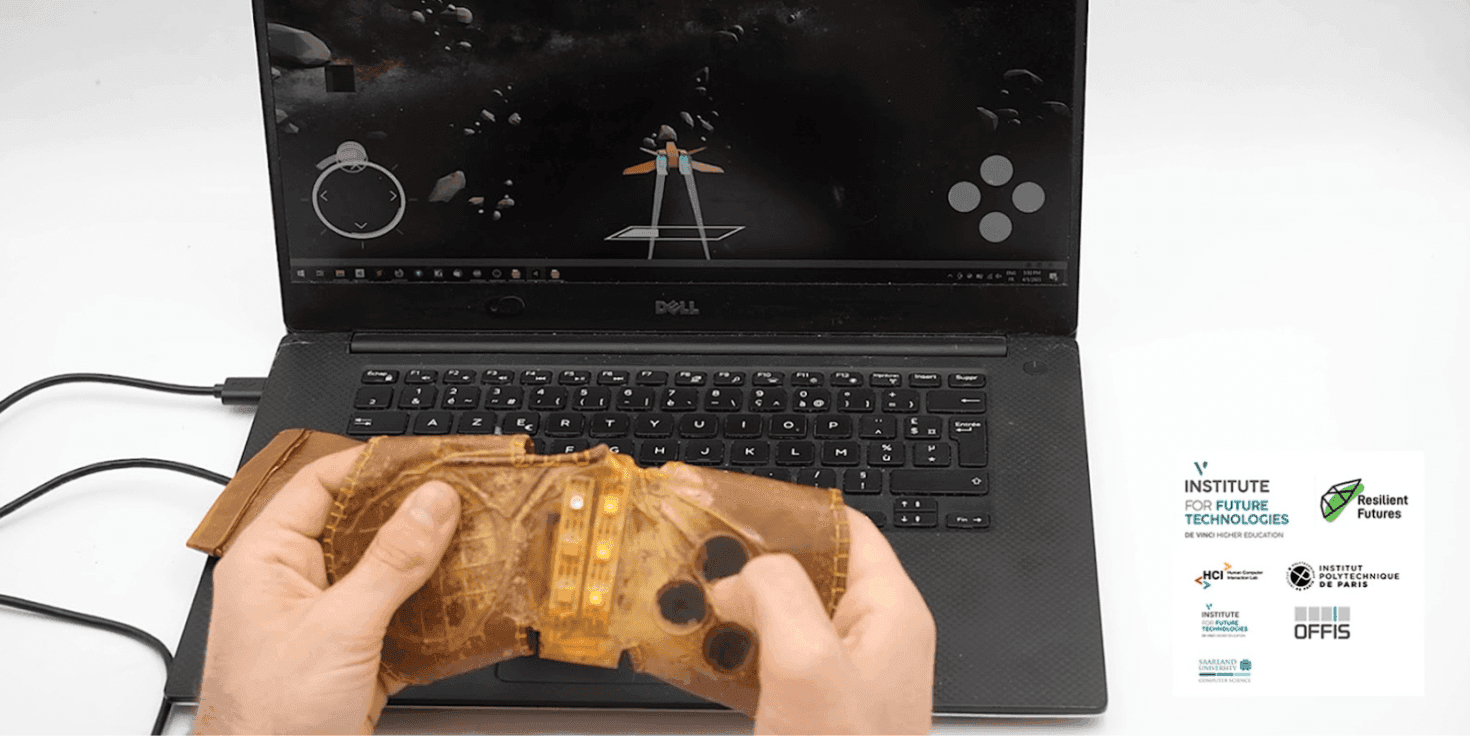1. How do ecological and technological resilience guide your work?
We are an engineering institute that places design culture and material literacy at the heart of our pedagogy. We aim to train engineers who are not just technically skilled but are also critically aware of the ecological and systemic dimensions of technologies.
Ecological and technological resilience are not treated as separate goals; they are intertwined principles that guide us from pedagogy to prototyping. We train Creative Technologists—individuals capable of approaching complex challenges with both a realistic understanding of current technological limitations and a visionary mindset for implementing alternative futures. They learn to iterate rapidly, prototype responsibly, and rethink “technology” from the ground up.
Our ecological approach involves low-tech and bio-inspired solutions: bioreactors for cultivating forms, open-source tools for ecological measurement, or low-energy devices grown from living materials. From our perspective, technological resilience is about adaptability: systems must be modular, repairable, open-source, and user-empowering. We align with DIY and hacker cultures, drawing from low-tech strategies and vernacular engineering.
Ultimately, we aim to cultivate a generation of engineers who don’t just ask “What can we build?” but rather, “What systems of care, repair, and reciprocity can we sustain through what we build?”

2. How do you implement principles of sustainable design across your projects?
Our sustainable design approach is embedded in three research axes: Human Learning, Artificial Life, and Resilient Future. Each axis examines Computer Human Interaction through different lenses but with a shared ethos: technologies must be purposeful, inclusive, and durable.
The Human Learning group develops assistive technologies and educational tools for cognition and rehabilitation, anchored in co-development with users. The Artificial Life group explores AI, IoT, and swarm robotics through real-world interaction contexts like sensory augmentation and embodied systems.
The Resilient Future group emphasizes bio-based materials like yeast, bacteria, and bioplastics, employing open-source, low-tech fabrication methods. We created a DIY bioreactor system replicable anywhere and biosensors using starch, requiring no specialized equipment.
We stress critical reflection: students question dominant paradigms and prototype regenerative alternatives. Within Resilient Future, biodegradability becomes a core principle. We explore programmable degradation, where interfaces decompose after their functional lifespan, allowing reconfiguration and reusability.

3. How do your urban farming and indoor cultivation efforts support resilience in food systems?
Urban farming is more than efficient food production—it’s about resilient, regenerative, and self-maintaining systems. Our indoor aquaponics reintegrate ecological cycles into urban architecture. Research explores questions like: What else can we produce locally? How can we reuse food production waste?
In controlled environments, we grow mycelium and mushrooms. While mushrooms are consumed, mycelium (often considered waste) is used to fabricate objects. This intersects with speculative design, which helps us question functionality and sustainability.
We even developed a longboard from wax fibers, an agricultural byproduct, applying circular design to recreational tech. Our goal is to prototype relational ecosystems that support communities in reclaiming resource sovereignty and exploring alternative lifestyles.
4. How do you blend digital and traditional methods to ensure resilient, low-impact manufacturing?
We combine digital fabrication with artisanal knowledge, designing processes that are technologically advanced yet adaptable and reproducible. One radical method involves using biology as fabrication, such as bacterial cellulose fermentation or mycelium growth.
These processes are integrated with digital tools—parametric modeling, 3D printing, CNC milling—to optimize growth geometries and control environmental conditions. This synergy creates open-source, locally adaptable systems accessible to DIY communities, educators, and artists.
For instance, working with local kombucha strains enables regional customization of bioproduct design. It’s about empowering diverse ecosystems to innovate.

5. How do biomimicry and organic materials contribute to your sustainable material development?
We view living organisms as co-creators, transforming production from extractive to collaborative. Our biohybrid devices use DIY bioreactors and digital fabrication tools, emphasizing local cultivation over global supply chains.
We draw from biomorphia and biophilia—engaging emotional and symbolic connections to living forms—alongside biomimicry for functional emulation. This fosters more-than-human design, where homeostasis, reciprocity, and mutual affordance guide interaction.
Our approach, aligned with bioHCI, emphasizes biological unpredictability, embedding ecological values into technology that evolves with us. We move from harm reduction to prototyping new paradigms: growth over extraction, repair over replacement, symbiosis over separation.

6. What role do Interactive Bioplastics play in sustainable, accessible tech?
The Interactive Bioplastics project develops biosensors for applications like biomedical care, product design, and smart interfaces. Our bioplastics—made from alginate, collagen, activated charcoal—are biodegradable, affordable, and safe.
Key innovation: non-permanent embedding of electronic components. Wires and microcontrollers are recoverable post-degradation, minimizing e-waste. We document fabrication steps following open-hardware principles, using low-cost tools and testing reuse cycles to ensure durability.
This project supports a vision where accessibility, biodegradability, and modularity converge, enabling community-driven, sustainable prototyping.

7. How do these bioplastics integrate with the circular economy?
Our core philosophy: if a prototype can be disassembled, it can be reused, reallocated, or regrown. We oppose the linear model of electronic manufacturing and instead support biodegradable substrates like kombucha-grown cellulose.
These substrates decompose naturally, releasing embedded components for reuse. This addresses the critical challenge of rare-earth elements scarcity by preserving value and reducing extraction dependency.
Our approach shifts electronics from disposability to circularity: materials are cycled, components are salvaged, and each device lives multiple lives.

8. What future do you envision for bio-based materials in electronics?
Bio-based materials are not just the future—they’re a necessity. We’re replacing petroleum-based substrates with biodegradable alternatives like bacterial cellulose, mycelium, and protein-based films.
Self-assembling organisms (e.g., bacteria, yeast, algae) enable local, low-energy production of adaptive, self-healing materials. We also explore biohybrid computing—like bacterial logic gates—pointing toward biological computation beyond silicon.
These innovations may start in DIY and research labs, but history shows rapid shifts are possible. We must guide this transformation with ethical responsibility, long-term thinking, and planetary compatibility.
In our view, bio-based materials aren’t mere alternatives. They invite us to redesign the relationship between technology, matter, and life.








